
Last fall, I started a practice of holding open office hours that has been highly valuable to me and, I hope, to you as well. This is time set aside on a weekly basis for anyone to make an appointment to meet with me in my office and share what's on their mind.
The scores of people who have visited thus far for a 15- to 30-minute chat come from every school and division across the WHSC. They range from department chairs, program directors, nursing officers, and administrative assistants to unit clerks, students, research specialists, and operations engineers. They come to discuss teaching concerns, quality and safety in patient care, culture change, translational research, palliative care, DNA custom cloning—you name it. Their topics have run the gamut from global and overarching to highly specific; from integration of informatics and research to details about diabetes treatment or hand hygiene. Some are new employees who just want to introduce themselves and say hello. Others seek advice. Some have come for repeat visits. Each has given me more insight into the vast inner workings of the Woodruff Health Sciences Center. More importantly, they have taught me a lot about the dedication and commitment to excellence that exists throughout our faculty and staff.
I really look forward to these sessions and meeting so many new people from across Emory. They give folks an opportunity to communicate ideas on which I can follow up and give me intelligence I would not otherwise be able to obtain. They keep me connected to the broad diversity of outstanding people at Emory, and I learn something new from each and every one about all the amazing things that we are doing.
Staying connected to one another is absolutely vital to improving our service, evolving our culture, and implementing innovation—all the many good things we are trying to accomplish on behalf of our patients, students, and other constituents, for now and for the future. Staying connected is even more crucial in times of economic challenge. Building ourselves as a team—continually learning from and teaching each other—is fundamental to our goals and vision of transforming health and healing ... together.
I urge you to be proactive and think about staying even more connected here in the WHSC. I also invite you to make an appointment for one of the open time segments to meet with me. To schedule a time, please contact Janet Gallo at 404-778-4719 or jagallo@emory.edu. I look forward to meeting with you.
Please share your thoughts and feedback at evphafeedback@emory.edu.
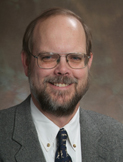 Robert Taylor is PI on the new BRP grant.
Robert Taylor is PI on the new BRP grant.
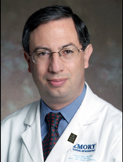 Carlos del Rio is PI at Emory for the HPTN trials.
Carlos del Rio is PI at Emory for the HPTN trials.
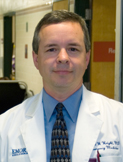 David Wright is leading the ProTECT study nationally.
David Wright is leading the ProTECT study nationally.
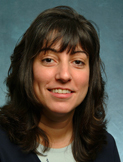 Debra Houry directs the Emory Center for Injury Control.
Debra Houry directs the Emory Center for Injury Control.
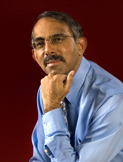 Venkat Narayan is PI for the Emory portion of the cardiometabolic center.
Venkat Narayan is PI for the Emory portion of the cardiometabolic center.
Emory receives five major new grants
• Partnership with Georgia Tech receives new funding
A team of Emory and Georgia Tech scientists have received a new five-year, $6 million NIH grant to conduct in-depth studies of abdominal aortic aneurysms to discover exactly why and how they form and how they can be prevented.
The new grant builds on an existing biomedical research partnership (BRP) between Emory and Georgia Tech, which originally was funded by the NIH four years ago to study the relationship between biomechanical forces and vascular diseases. The research team accomplished its goal of providing a better understanding of the basic processes involved in atherosclerosis. They also developed imaging, molecular, and computational tools that will be directly applicable to their new research focus.
Robert Taylor (cardiology and biomedical engineering) is principal investigator of the new BRP grant. Read more.
• Emory joins HIV prevention trials network
Emory University's HIV Clinical Trials Unit has been selected to join the NIH-sponsored HIV Prevention Trials Network (HPTN), a worldwide collaborative clinical trials group that develops and tests non-vaccine interventions to prevent HIV transmission. Emory researchers will receive a grant of $4.8 million over three years for participation.
The Emory HIV Clinical Trials Unit soon will begin recruiting patients for its first two clinical studies in the HPTN. One will estimate the overall HIV incidence rate in at-risk women and evaluate the feasibility of evaluating a cohort of these women. Another will assess the feasibility of an intervention among African-American men who have sex with men.
The HPTN focuses on four research areas for HIV prevention: antiretroviral therapies, behavioral interventions, STD control, and substance abuse. Carlos del Rio, chair of the Hubert Department of Global Health in the Rollins School of Public Health, is principal investigator at Emory for the HPTN trials. Read more.
• Grant funds phase III study of progesterone for TBI
A three-year NIH grant announced last month enables commencement of the third phase of a groundbreaking study to evaluate the effectiveness of progesterone on acute traumatic brain injury (TBI). Initial funding is $14.5 million, and the trial could be extended for three more years, with additional funding of $14 million, if milestones are met during the first three years.
The Emory-led, multicenter, randomized, double-blinded study (ProTECT III) will enroll 1,140 patients at 17 medical centers in 15 states. Atlanta's Grady Memorial Hospital will serve as the lead center.
David Wright (emergency medicine) is the study's lead investigator nationally, and Michael Frankel (neurology) will serve as site principal investigator of the clinical trial at Grady.
In a small pilot study, Emory researchers found that progesterone is safe and that it also reduced mortality by 50% in those with TBI. In patients with moderate brain injury, it improved functional outcomes and reduced disability. The larger study will allow the researchers to confirm these findings.
This new treatment is based on a classic bench-to-beside partnership between clinicians and Emory scientist Donald Stein, who first discovered the neuro-protective properties of progesterone in the lab more than 25 years ago. Read more.
• Emory injury control center named to national network
The CDC has designated the Emory Center for Injury Control as one of its newest injury control research centers (ICRCs). The Emory center, located jointly in the Department of Emergency Medicine in the medical school and in the Rollins School of Public Health, joins a group of 11 ICRCs throughout the country.
Emory will receive a grant from the CDC totaling almost $5 million over five years to conduct research on prevention and treatment of a wide variety of injuries. The center's activities will focus on traumatic brain injury, development of international public health surveillance systems and trauma registries, evaluation of programs to prevent child abuse and youth violence, and reduction of motor vehicle injuries. Read more.
• Fighting cardiometabolic disease in South Asia
The NIH's National Heart, Lung, and Blood Institute awarded Emory and the Public Health Foundation of India (PHFI) a $3 million, five-year contract to establish a Global Center of Excellence for Prevention and Control of Cardiometabolic Diseases in South Asia. The PFHI/Emory center will also receive additional funding from the Ovations Chronic Disease Initiative of the UnitedHealth Group.
The grant will be used to study the burden and risk factors for cardiovascular disease and diabetes in India and Pakistan and to investigate ways to prevent the diseases. The center also will help train young scientists in those countries to conduct research in diabetes and heart disease and will promote collaboration of Emory faculty and students in global health research.
The PHFI/Emory Center will be headquartered in New Delhi, India.
The center is led by Srinath Reddy, president of the PHFI, and by Venkat Narayan, Hubert Professor of Global Health and Epidemiology in the Rollins School of Public Health. Read more.
 Penny Castellano
Penny Castellano
Pay for performance: quality incentives in Medicare reimbursement
In reimbursing health care providers for Medicare services, the federal government has been shifting from the traditional model of fee for quantity of services toward fee for performance. The new model, currently voluntary, rewards clinicians who can document how well they follow specific quality-of-care measures set by Medicare. Since 2007, Emory Healthcare has been participating in the Physician Quality Reporting Initiative (PQRI).
Physicians in emergency medicine and cardiothoracic surgery were the earliest pioneers in PQRI at Emory in 2007. They shared what they had learned in their self-taught PQRI crash course, and other sections joined in the following year. In 2008, more than 300 Emory physicians participated, and the number continues to grow, according to Penny Castellano, chief medical and quality officer at The Emory Clinic.
Revised PQRI guidelines took effect in 2009, with 153 specific measures ranging across a wide variety of conditions. Participating physicians must select the measures that make sense for their own patients, then learn and enter special codes on all Medicare claims, indicating when they performed the measure: checked blood sugar in patients at risk of diabetes, for example. The step also must match what is entered in each patient's medical record.
It’s a lot of extra work, especially because of the short time between announcement of new or revised measures/codes and the deadline for full implementation. There is also a long lag time between submission of claims and receipt of any feedback as to how well individual physicians and practices have met guidelines. But since 2007, when Congress authorized Medicare to add a pay-for-performance dimension, there is a small carrot. At each year end, if the participating physician has performed and recorded at least three of the diverse PQRI measures at least 80% of the time they were appropriate, the practice receives an additional reimbursement for all Medicare patients treated by that physician. Last year the incentive was an additional 1.5%. For 2009, it is 2%.
Recently, Medicare is offering a new way to submit information as part of the PQRI initiative. Physicians can explore submission via registries, which are third parties capable of transmitting information about quality measures on a provider's behalf. There are a number of registries authorized by the federal government to securely submit this information for PQRI. Emory's Family Medicine program is piloting use of this method, for which there is an incentive equivalent to the claims method.
Participating in PQRI provides opportunity for additional reimbursement, but money is not why Emory Healthcare stepped up to participate in the initiative, says Castellano. "We believe PQRI will be in the best interests of patients, further standardizing care and contributing to good outcomes. We want to help it evolve—and we want to be ready if and when PQRI moves from being voluntary to mandatory."
The 2008 Medicare Improvement for Patients and Providers Act made PQRI permanent—but guaranteed incentives only through 2010. Incentives already are scheduled to decline in the future. And for some measures now incentivized, such as electronic prescribing, physicians who do not participate will begin to be penalized a small but growing percentage starting as early as 2012.
Castellano also anticipates that information on successful reporters eventually will be made public. Already there is a Medicare Participating Provider website where patients can look up doctors who reported in 2007.
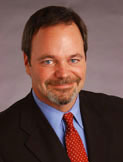 John Engelen
John Engelen
Bio stats:
• VP, Govt Affairs, Emory Univ
• Dir, Federal Relations, Univ of Minnesota
• Dir, Govt Relations and Regulatory Agency Affairs, U.S. and Canada, EcoLab
• Dir, Govt Affairs, American Cyanamid, Fortune 100 pharm and ag product company
• Legislative asst to U.S. Sen. David Durenberger and staff member of U.S. Senate Govt Affairs
Committee
• BA, pol sci, Univ of St. Thomas, St. Paul, Minn.
Contact:
john.engelen@emory.edu
Opening doors between university and government
One in a series of profiles of people in the Woodruff Health Sciences Center
Most people outside the walls of academe don't know a lot about how universities and academic health centers really work. A big part of John Engelen's job as VP for governmental affairs at Emory is to make sure that elected officials, policy makers, and neighbors do understand what is happening at Emory and why it matters.
How are Emory investigators using NIH money? How are medical residents being trained, and what impact do they have on public hospitals like Grady and the Atlanta VA Medical Center? Where are those dump trucks going when they leave the new building being constructed on campus—and by the way, what is the purpose of the new building and where are its inhabitants going to park?
Building that kind of understanding means getting Emory leaders face to face with government leaders. This helps ensure that Emory is seated prominently at the table when policy agendas and strategies are being laid out by the government or by organizations such as the Association of American Universities or the Association of American Medical Colleges.
It also means making Emory the go-to place for information. We have a lot of smart, knowledgeable people, Engelen tells government leaders, especially those from the Georgia delegation. About to vote on a bill on health care funding? Call us. Someone will give you a one-on-one tutorial that will make you the best-informed person in the room. Need a briefing on the history and current events in the Middle East before a legislative tour? Ditto.
"Thanks to these constant interactions, we think of our elected officials as friends and believe they think the same way about us," says Engelen. That's important when Emory wants attention and resources directed to an issue: increases in funding for trauma care, for example, or support for the Georgia Research Alliance and Georgia Cancer Coalition. It also helps when difficult issues arise. "Legislators (or, for that matter, neighbors) may not always agree with us," says Engelen, "but they know us and know they can trust what we say."
Another part of Engelen's job is to bring information back to campus, so administrators, faculty, and staff understand what's happening in the government about issues that affect them, such as student aid, tuition, continued scrutiny of endowment management for tax purposes, or ever-shifting research regulations. It's never been more complicated, says Engelen, given the stresses on the health care system, Georgia's significant budget deficit, questions of how the new federal stimulus package will translate into research facilities, and a dozen more such issues.
Engelen splits his time in thirds: in Washington, D.C., the Georgia State Capitol (especially when the legislators are in session), and on campus. Thank heaven, he says, he has a staff who focus on specific aspects of this large, complex playing field—and who are well known among their various constituents.
For community affairs here at home, including county and city leadership and civic associations and neighborhoods that border the campus, there are Betty Willis and Denise Walker, senior associate VP and assistant director, respectively. As director of state government relations, Linda Womack spends much of her time in the State Capitol. Washington representative Cameron Taylor lives in D.C. Engelen himself reports to Kent Alexander, senior VP and general counsel, and serves as adviser to President Wagner and the university's senior leadership team, including that of the Woodruff Health Sciences Center.
 Sandra Shamburger
Sandra Shamburger
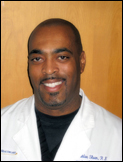 Sheldon Sloan
Sheldon Sloan
Ins and outs of bed traffic control
Hospital beds are highly specialized commodities, their availability rising and falling quicker than the stock market—and tracked just as intently.
When beds are full at Emory University Hospital Midtown (EUHM), RNs Sandra Shamburger and Sheldon Sloan are two good people to know. Like similar bed management teams in Emory Healthcare's other hospitals, they have one goal: getting the right patient in the right bed at the right time.
Bed management coordinator Shamburger heads an 11-person, 24/7 bed management team, assigning beds to patients based on their medical needs. As coordinator of patient flow, Sloan moves continually throughout floors and units to facilitate the move of patients from one area to another as their medical needs change.
Every morning and again every afternoon, the two hold a half-hour briefing with all the hospital's charge nurses. Together they project which patients are likely to be discharged during the next 12 hours and what staff in various units will be able to handle in the way of new patients. Between briefings, Shamburger stays close to a computer monitor that continuously updates which beds have opened up and which have been through housekeeping.
About 12,000 bed-related calls arrive per month, evenly divided between Emory and community doctors who admit to EUHM. Shamburger and her team make that many more outgoing calls, constantly checking with the units to see what beds are likely to open up in the next hour. When EUHM is completely full, she calls her counterpart at Emory University Hospital and vice versa.
Meanwhile, Sloan moves through the hospital, talking to clinicians, poring over patient charts, searching for those who can be moved to open up needed beds. Since Sloan, Shamburger, and most of the bed management team have worked as nurses, they understand precisely which types of patient needs—special drip, monitoring, even isolation—can be served best by the different areas.
Bed demand shifts continually and often unexpectedly with urgent admits. Patients need to move to beds from surgical recovery, from emergency rooms, or from consulting rooms and cath labs where they have been found to have problems such as dangerously elevated blood sugar or a worrisome EKG.
Laura Hurt, director of nursing operations at EUHM, says that Shamburger and Sloan make a tremendous difference in the hospital's ability to serve patients—and on the bottom line. For example, Sloan works with diversion issues and Shamburger handles recording the exact hour when patients are admitted/transferred between floors or ICUs, which can make a big difference in reimbursement.
If it sounds like a gigantic chess game, Shamburger, Sloan, and the rest of the team never forget that it is all about patients and the people who care for them. "We all want to make it work for patients," says Shamburger, "and we all have each others' backs. I go home at the end of the day feeling as if I have been part of a big family."

• EUH ranks among nation's best in 11 specialties
In just-released rankings from U.S. News & World Report, Emory University Hospital ranked among the nation's best hospitals in 11 specialties, including five top 20 rankings. Overall, EUH is one of 170 out of more than 5,400 hospitals in the country to be named in even one of the magazine's top 50 specialty rankings. EUH is the only acute care hospital in Georgia named in these rankings.
The rankings include the following: ophthalmology 9; psychiatry 10; geriatrics 13; heart and heart surgery 13; neurology and neurosurgery 14; ear, nose and throat 22; kidney disease 25; diabetes and endocrinology 31; gynecology 44; urology 44; and cancer 46. Read more.
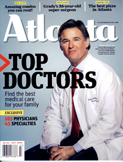
• Congratulations, Emory doctors
Almost half (72) of the 165 doctors selected for recognition in the July issue of Atlanta magazine as "top doctors" in Atlanta are Emory Healthcare physicians and Emory medical faculty. The list is prepared by a national firm that surveys doctors in key areas of the country. Read more. A complete list of names and specialties, including specialties in which Emory predominated, can be found on the Emory Healthcare website.
 The Claudia Nance Rollins Building is scheduled to open in fall of 2010.
The Claudia Nance Rollins Building is scheduled to open in fall of 2010.
• Topping out: new public health building
No one seemed to mind the June heat atop the Michael Street Parking Deck as those in the Rollins School of Public Health and Whiting-Turner Contracting Company "topped out" the Claudia Nance Rollins Building, scheduled to open next year.
The lunchtime celebration provided a brief respite for the more than 100 workers with Whiting-Turner and an opportunity for the Rollins community to applaud them for creating a building that will more than double the physical size of the school.
The long hours spent by workers on the project were not lost on Dean James Curran, whose father spent 40 years building homes in Detroit. One Rollins student grew up in a home built by Curran's father.
"My father had strong, rough hands," Curran said. "He taught me not only the importance of doing real work but also the importance of teamwork. What fascinates me most is the teamwork that you show. My father would be exceptionally proud of you. There's real work in this building."
Curran also recognized special guests Bob and Pam Rollins Henritze, who represented the Rollins family, and Lawrence Klamon, chair of the school's Dean's Council. Through the O. Wayne Rollins Foundation, the Rollins family provided the $50 million lead gift for the building, which is named for O. Wayne's mother. Klamon and his wife Ann serve as Campaign Emory co-chairs for the school. In appreciation of their support, a large public meeting space on the building's top floor will be named in the Klamons' honor. Read more.

• Support research in juvenile diabetes
Emory will be joining hundreds of other corporations throughout Georgia for the 2009 Juvenile Diabetes Research Foundation's Walk to Cure Diabetes on Saturday, October 17, at Centennial Olympic Park. All proceeds from the event will support research for diabetes.
Becoming part of the Emory team is easy—stop by an information booth at one of the following locations:
• Thursday, July 23, 11:30 a.m. to 12:30 p.m., outside of cafeteria, Emory University Hospital
• Friday, July 24, 11:30 a.m. to 12:30 p.m., outside of cafeteria, Emory University Hospital Midtown
• Friday, August 7, 11:30 a.m. to 12:30 p.m., outside of Cox Hall/Asbury Court on the Emory campus
If you are unable to stop by one of the booths and are interested in finding out more about the walk, please contact Patrick Hammond (patrick.hammond@emoryhealthcare.org or 404-778-5160) or Traci Galatas (traci.galatas@emoryhealthcare.org or 404-778-3701) of Emory Healthcare's Office of Managed Care. They are leading Emory's efforts in the Walk to Cure Diabetes. You can also register online—please be sure to indicate Emory under team name.
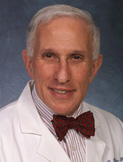 Lawrence Phillips
Lawrence Phillips
• Emory employees helped validate economy and accuracy of diabetes screening test
A test commonly used to help identify women with diabetes during pregnancy may be an accurate, convenient, and inexpensive way to screen the general population for unrecognized diabetes and prediabetes, according to a study, "Glucose challenge test screening for prediabetes and undiagnosed diabetes," published online in Diabetologia (to appear in the journal's print edition in the fall).
"Widespread use of the glucose challenge test (GCT) to screen Americans for prediabetes and diabetes could provide a major opportunity to improve the health of more than 40 million people," says lead author Lawrence Phillips (endocrinology).
The study screened 1,573 volunteer participants who had never been diagnosed with diabetes. More than 500 of these participants were Emory employees.
After screening, researchers found that 4.6% of the participants had previously unrecognized diabetes, and 18.7% had prediabetes.
The GCT was the most accurate screening test for these problems and provided consistent results for a diverse group of patients—old and young, normal weight and overweight, men and women, with and without a family history of diabetes. The GCT also appeared to be less expensive than other screening strategies. Read more.
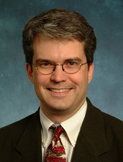 Lance Waller
Lance Waller
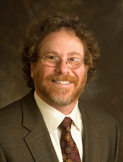 Jeremy Boss
Jeremy Boss
• Two new chairs in public health and medicine
Lance Waller has been named chair of biostatistics and bioinformatics in the Rollins School of Public Health. He will also serve as associate director of biostatistics and bioinformatics in the Emory Center for Comprehensive Informatics. Waller replaces Michael Kutner, who retired as chair but continues to teach and do research.
Waller's research involves assessment of spatial clustering of disease, linking spatial statistics and geographic information systems, statistical assessments of environmental justice, and hierarchical methods for modeling small-area health statistics. His recent analyses have included spatial point process methods in alcohol epidemiology and conservation biology (sea turtle nesting patterns), and hierarchical models in disease ecology. Read more.
Jeremy Boss is the new chair of microbiology and immunology in the medical school. He replaces interim chair Charles Moran and former chair Richard Compans, who stepped down last year to direct Emory's flu-related research center.
Since joining Emory's medical faculty in 1986, Boss has mentored several department faculty who have gained tenure and has trained 22 postdoctoral fellows and 22 PhD students, in addition to visiting scientists and numerous graduate students. Boss is editor-in-chief of the Journal of Immunology and is principal investigator on three RO1 NIH grants. He is also co-author of a popular book on careers in biomedical research, Academic Scientists at Work: Navigating the Biomedical Career. Read more.
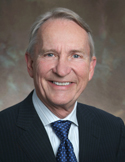 Kenneth Brigham
Kenneth Brigham
• Brigham appointed permanent director of predictive health
Kenneth Brigham (pulmonary medicine) has been appointed permanent director of Predictive Health and Society, one of the university's key strategic initiatives, and its components, the Predictive Health Institute and the Center for Health Discovery and Well-Being. This is a continuation of his role as associate VP for health affairs in the WHSC.
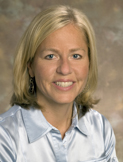 Kathryn Carrico
Kathryn Carrico
• Carrico leads fund-raising in medical school
Kathryn (Kat) Carrico recently joined Emory as senior associate VP for development for the medical school and will have responsibility for all development programs within the school. Carrico comes from Northwestern University Feinberg School of Medicine, where she was executive director of individual giving and prior to that, major gift director for medicine. She also has worked in development at Children's Memorial Hospital Foundation in Chicago.
 Patient-family adviser Mary Hendrix
Patient-family adviser Mary Hendrix
• On the run
As a patient-family adviser to Emory Healthcare, Mary Hendrix not only offers input and feedback to Emory about ways to improve patient care services, but she also gave Emory a bit of free advertising when she ran the Peachtree on July 4. Hendrix wore a sign saying "This patient thinks Emory Healthcare ROCKS!" Read more about Emory Healthcare's efforts to solicit advice and feedback from patients and their family members. Thank you to Mary Hendrix and to all Emory Healthcare patient-family advisers.
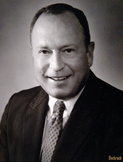 James Glenn
James Glenn
• In memory
James Glenn, who served as medical school dean at Emory from 1980 to 1983, died on June 10 at age 81. Glenn, a urologic surgeon, came to Emory at a time when the medical school was turning serious attention to building its research programs, and he helped quadruple the school's grant base from $10 million to $40 million. Read more about Glenn. Read more about the medical school during the time that Glenn was here.

